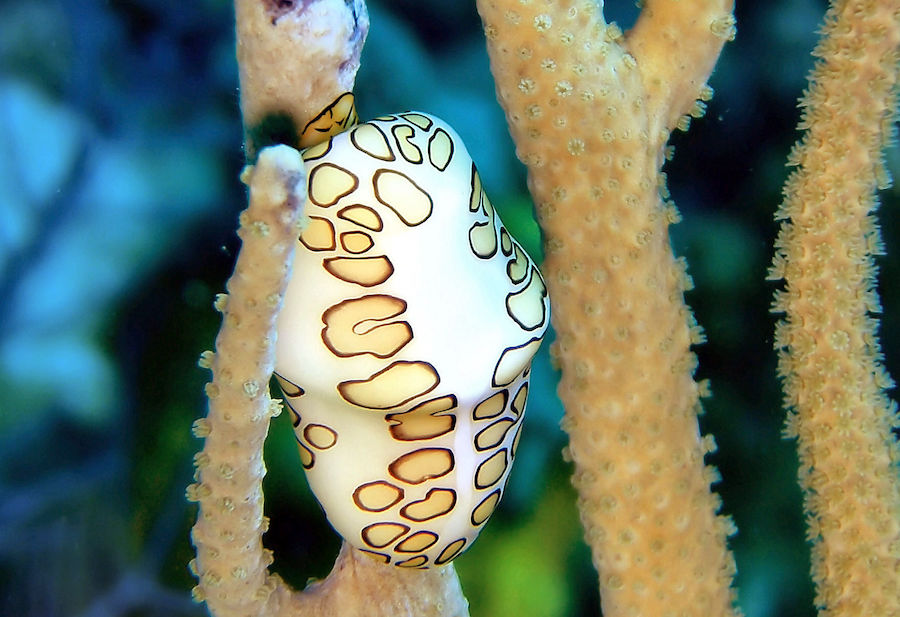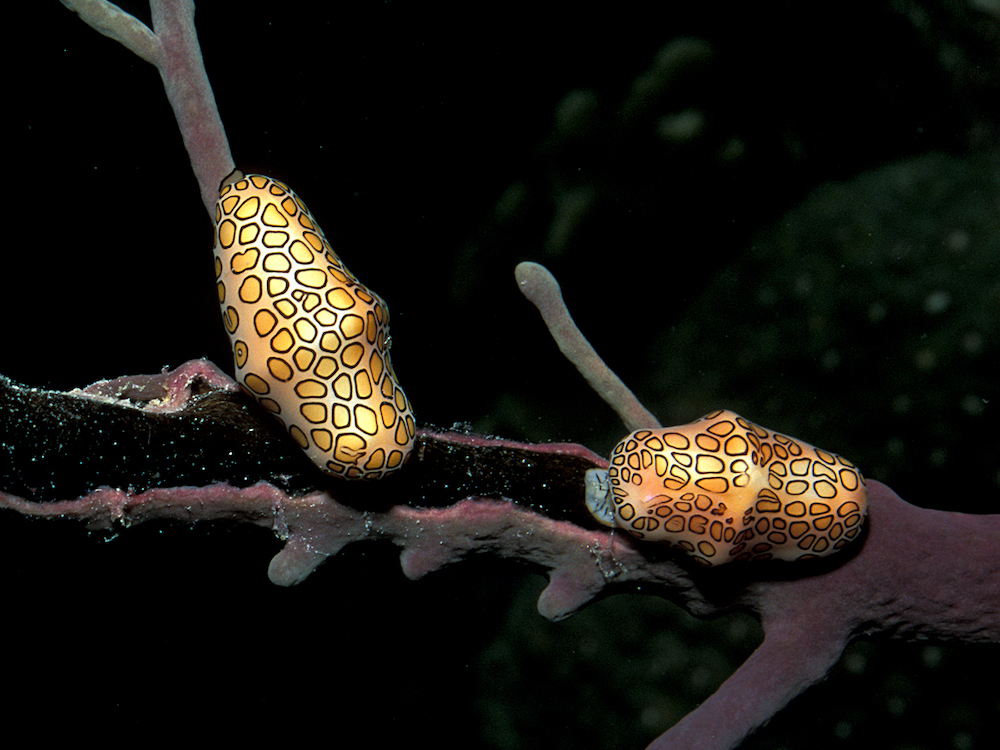What is the Flamingo Tongue Snail?
Meet the flamingo tongue snail, a bright marine mollusk

The flamingo tongue snail (Cyphoma gibbosum) is a strange-looking little critter with an even stranger name. Whether you’ve seen a flamingo tongue in person or have never heard of it in your life, here are some fun facts about this brightly-colored invertebrate.
What does a flamingo tongue snail look like?
Flamingo tongues are small—only growing about an inch long—so if you swim by too quickly you might miss them. Although they’re tiny, their coloring makes a big statement. Flamingo tongues have vibrant orange and yellow coloring with thin black rings covering their bodies. It’s almost like they were inspired by leopard spots and added their own invertebrate flair. Under their colorful exteriors, they have a white or tan colored shell.

Where is the flamingo tongue snail found?
Flamingo tongue snails are a relatively common sight on reefs in the western Atlantic and Caribbean from just below the surface to about 100 feet deep. They like to eat the polyps of soft corals like sea fans, sea whips and other gorgonians. They use a special appendage called a radula to scrape away soft tissues of the coral. The radula, which resembles a long ribbon with teeth, is exclusively found in all mollusks except for bivalves like clams. Although they eat live coral, do not fear—flamingo tongues won’t graze too much on one coral colony, and the polyps regrow after they leave.

Who eats the flamingo tongue snail?
Flamingo tongue snails have a number of predators on the reef, including larger reef fish and lobsters. They protect themselves by absorbing toxins consumed from soft corals and becoming toxic themselves. Like many animals (looking at you, nudibranchs!) flamingo tongues’ bright colors warn other predators to stay away. Healthy predator populations are part of a well-balanced reef: a 2007 study used cages to keep large fish and invertebrates off parts of the Florida Keys reefs. When there were no predators, the amount of flamingo tongue snails increased 19-fold! More flamingo tongues meant increased munching on the soft corals, resulting in eight times the amount of damage on gorgonian corals.

If you’re headed to the Western Atlantic of Caribbean reefs anytime soon, keep a look out for these bright and captivating invertebrates. They’re an important part of a healthy, balanced coral reef ecosystem.